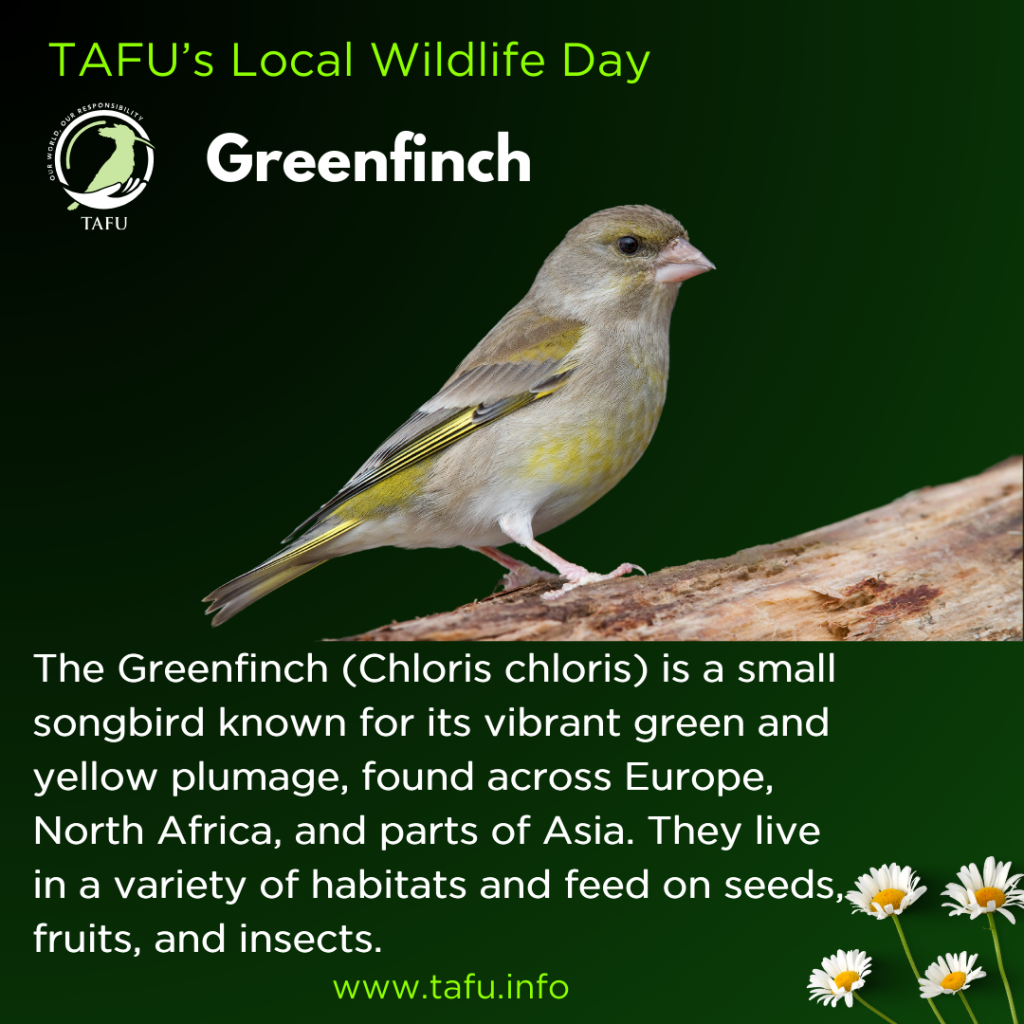Greenfinch
As part of the countdown to TAFU’s Local Wildlife Day on the 11th of July – Species no. 40.
Stay tuned – 3 more days and 3 more species until then!
The Greenfinch (Chloris chloris) is a small passerine bird, measuring about 15 cm in length with a wingspan of 24-28 cm. It is easily identifiable by its olive-green plumage, with bright yellow patches on the wings and tail, and a stout, conical bill suited for seed eating. Males tend to be more brightly coloured than females, which are generally duller with more brownish tones.
Greenfinches are adaptable birds that thrive in a variety of habitats, including gardens, woodlands, farmland, and urban areas. They are frequently seen in flocks, especially outside of the breeding season. Their diet primarily consists of seeds from a wide range of plants, but they also consume fruits and insects, especially during the breeding season to provide protein for their chicks.
Breeding season for the Greenfinch runs from April to July. They typically nest in dense shrubs or trees, often in loose colonies. The female builds a cup-shaped nest from twigs, grass, and moss, lined with feathers and hair. She lays 4-5 pale blue or white eggs with fine brown spots, which she incubates for about 12-14 days. Both parents are involved in feeding the chicks, which fledge up to 18 days after hatching. They can have up to 3 broods per year.
Greenfinch populations have faced challenges in recent years due to a disease called trichomonosis, which has caused significant declines. However, they remain a widespread and resilient species, benefiting from the availability of food in gardens and the diversity of their natural diet.
Ensuring our green spaces have as many native trees and shrubs as possible will offer natural food sources and nesting sites, which can help to protect and support their populations.

